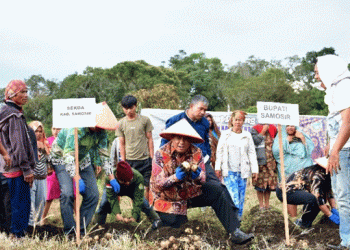As the world celebrates International Potato Day on May 30th, an occasion recognized by the United Nations to emphasize the nutritional and economic significance of this versatile tuber, Peru stands out as a leader in potato production in Latin America. Boasting over 3,000 varieties, Peru has witnessed a steady rise in potato cultivation year after year.
Despite its agricultural prowess, the Development Studies Network (REDES), a Peruvian academic institution, sheds light on the vulnerabilities plaguing potato production in the country. Climatic factors and the presence of pests, such as the notorious “papakuro” (potato worm), have contributed to a nearly 10% decline in production in 2023.
The bulk of potato harvests in Peru, accounting for 64%, rely on dryland conditions, exclusively irrigated by natural rainfall rather than advanced irrigation systems. Consequently, extended periods of low rainfall, exacerbated by phenomena like the El Niño Coastal Phenomenon, severely impact these crops.
César García, an economist at REDES, underscores the importance of addressing these challenges to safeguard the livelihoods of producer families and uphold the crucial role of potatoes in the nation’s food industry and economy.
The 2022-2023 campaign witnessed a significant drop in national production, with Puno being the hardest-hit department due to prolonged droughts. Productivity remains a concern, with Peru ranking 87th globally in potato yield per hectare, far below countries like Argentina, Brazil, and Mexico.
García emphasizes the urgent need for embracing modern agricultural practices, including the adoption of high-quality seeds and fertilizers to enhance productivity and combat pests and diseases effectively.
In addition to technological advancements, providing comprehensive training to farmers on pest prevention and control is deemed essential to fortify the resilience of Peru’s potato farming sector against external threats and ensure sustainable growth in the years to come.








